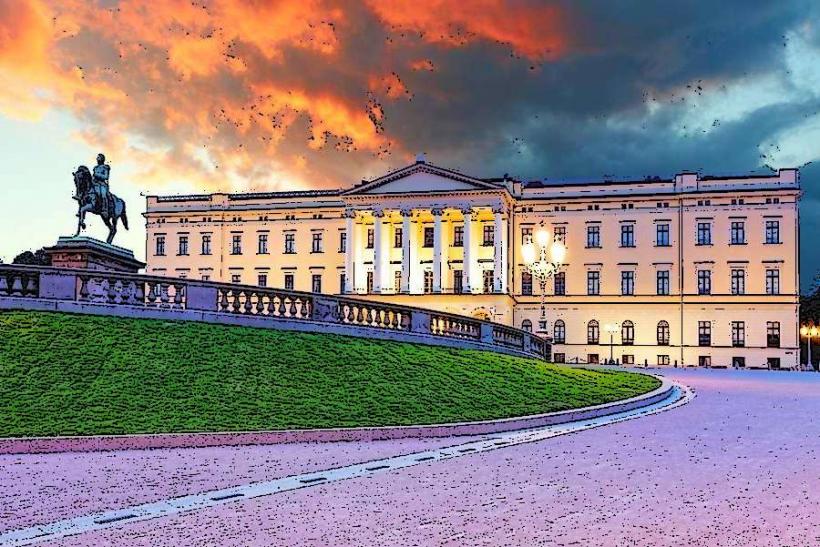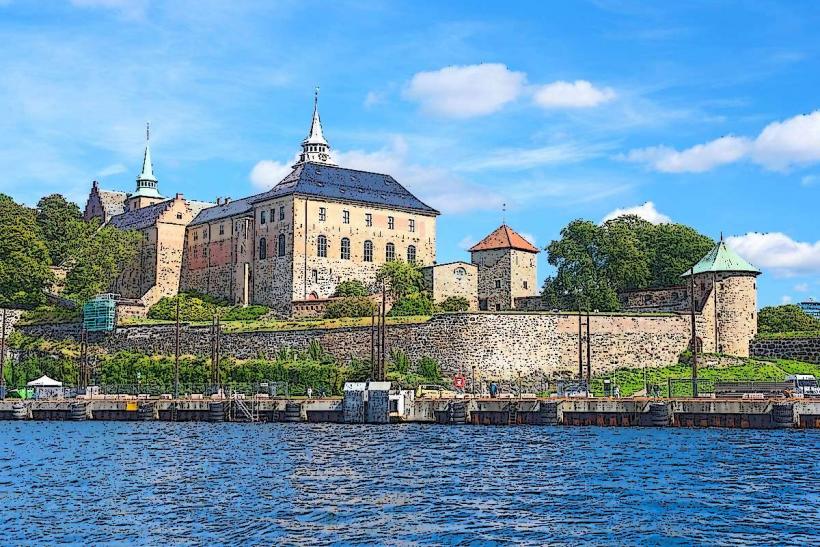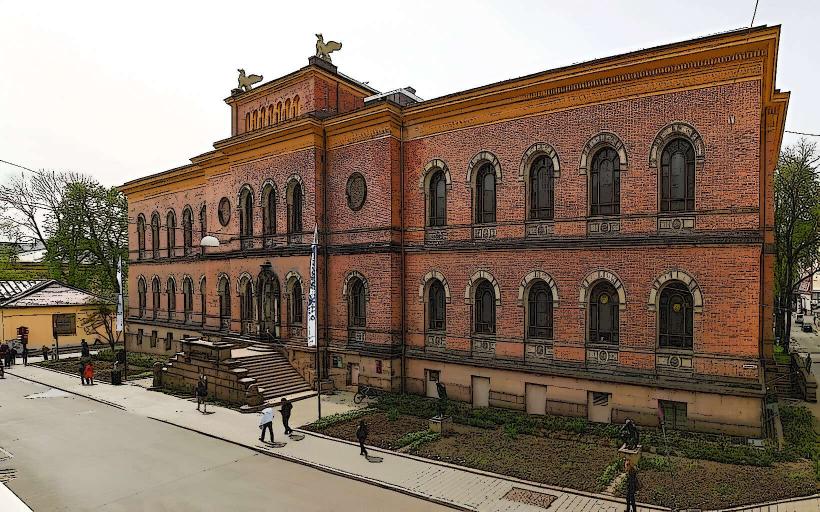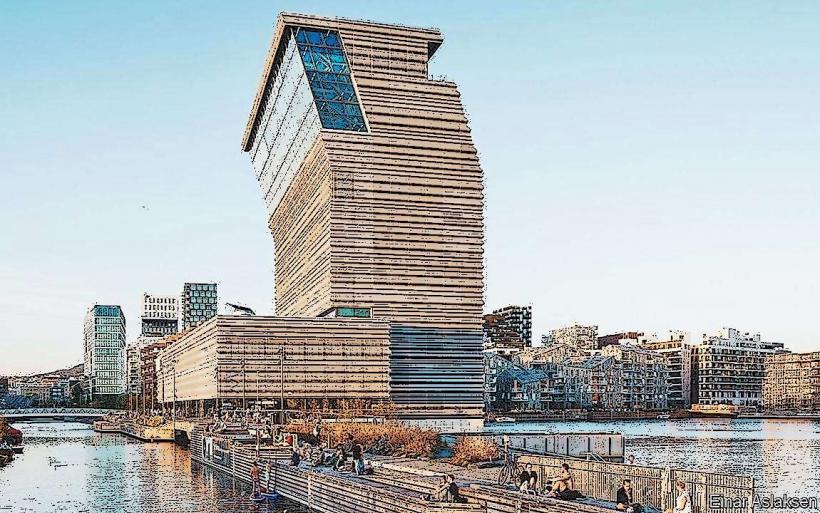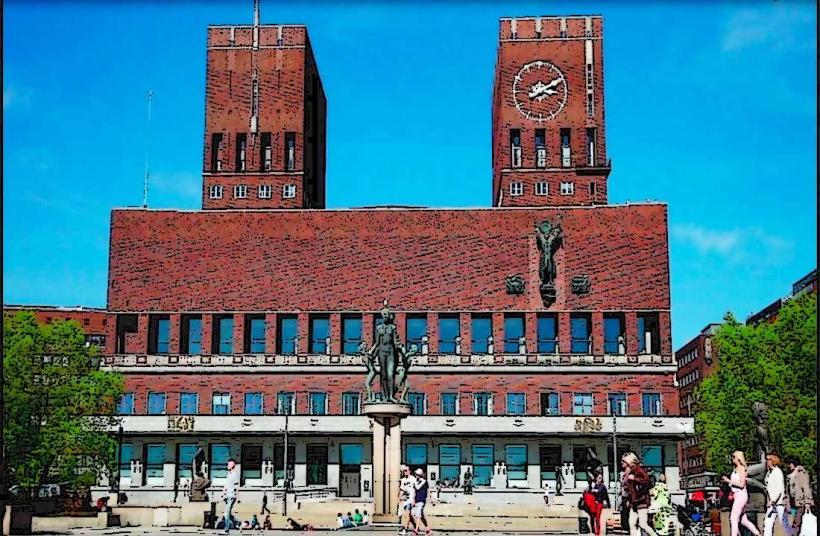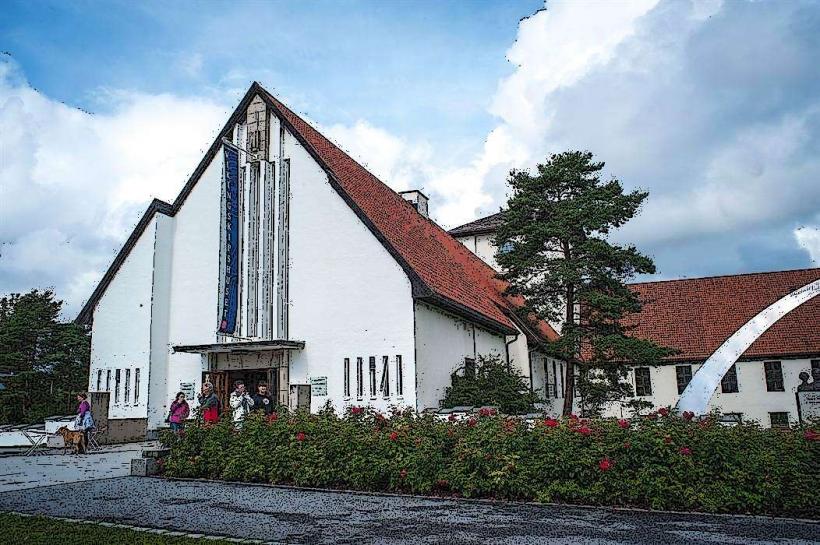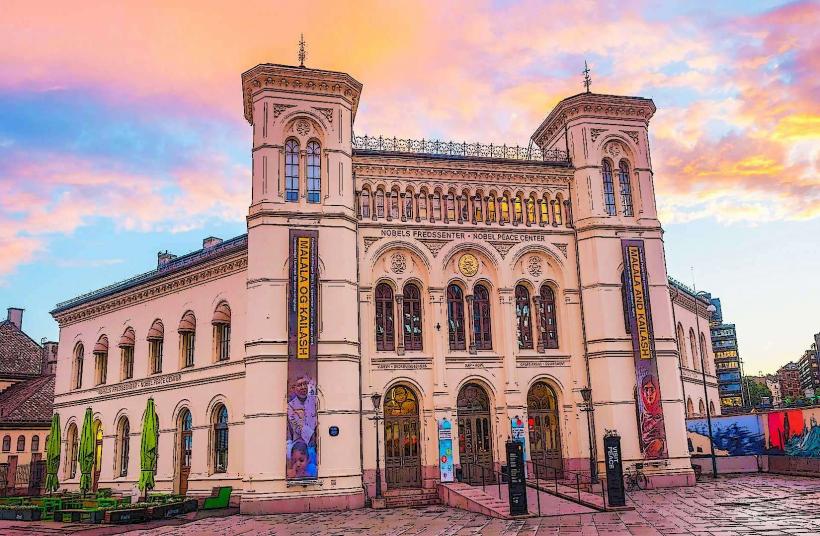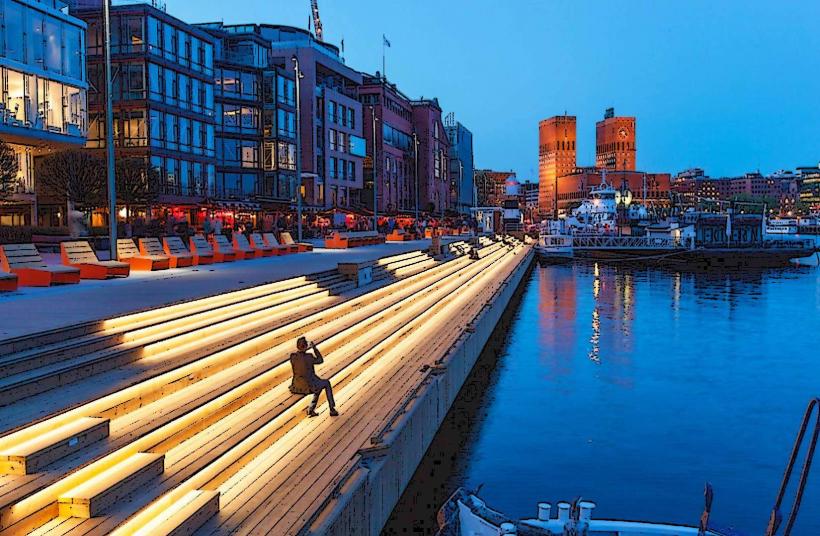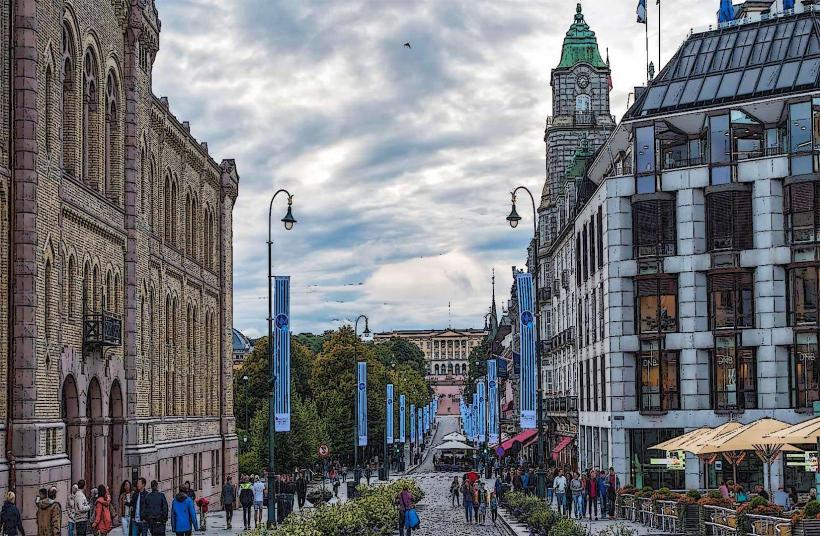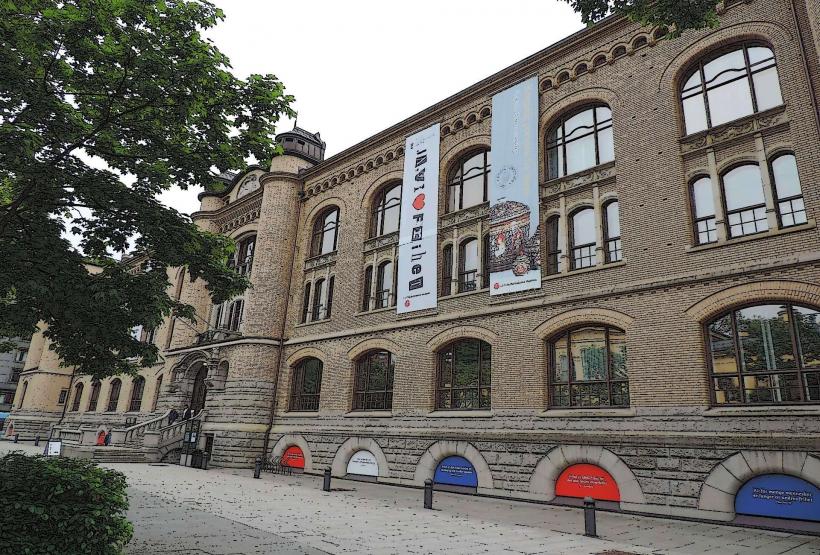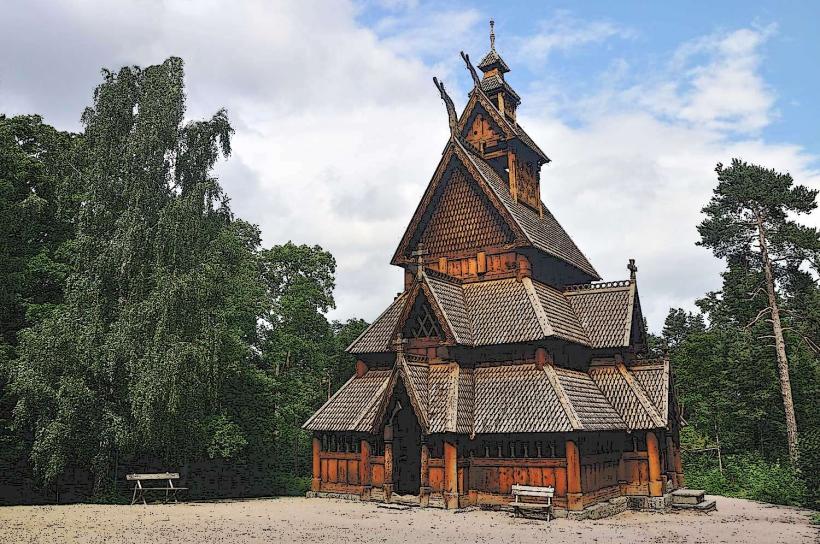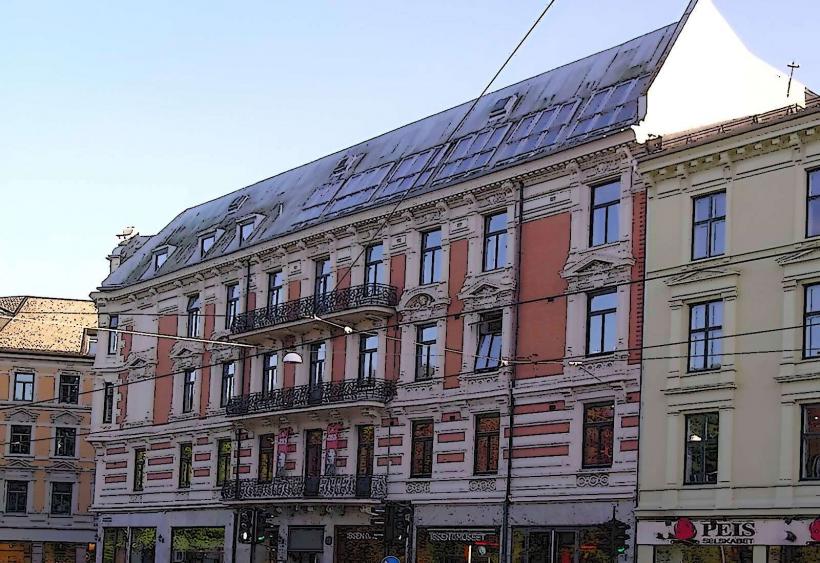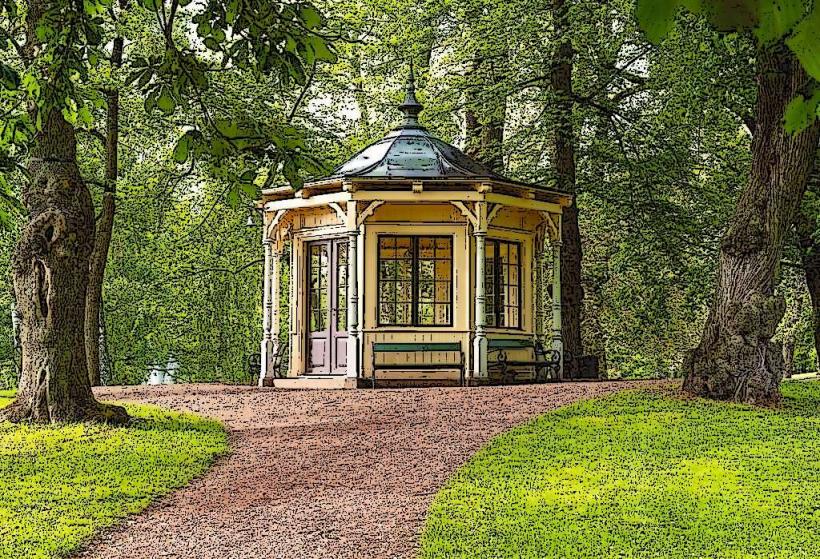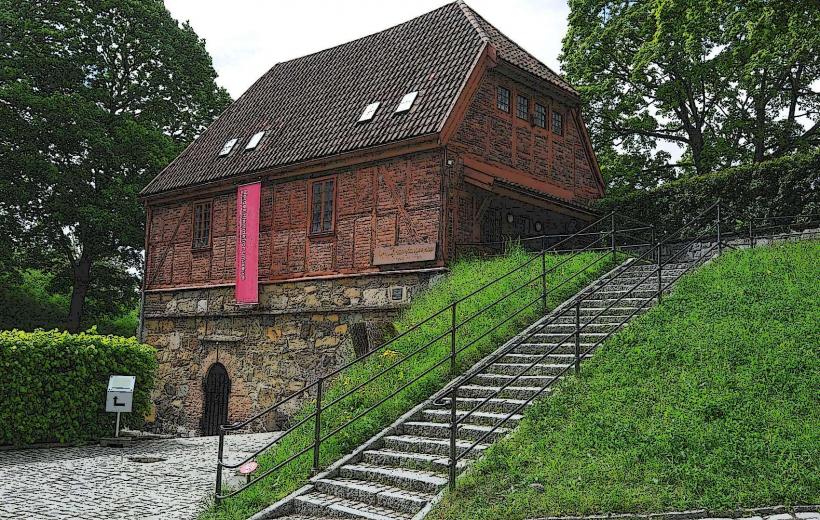Information
Landmark: Oslo CathedralCity: Oslo
Country: Norway
Continent: Europe
Oslo Cathedral (also known as Oslo Domkirke or Domkirken in Norwegian) is a significant landmark in the heart of Oslo, serving as both a historical and cultural symbol for the city. It is the main church for the Church of Norway in Oslo and has long been associated with the city’s history and religious life. The cathedral’s location, architecture, and role in major state events make it a notable destination for visitors interested in Oslo's heritage and religious practices.
History and Background
- Construction and Early History: The Oslo Cathedral was originally built in the 17th century. Its predecessor, the medieval St. Hallvard's Church, had been demolished in the early 1600s. The cathedral was completed in 1697, making it one of the oldest churches in the city.
- Architectural Influences: The design of the Oslo Cathedral is inspired by Baroque architecture, typical of the period. However, over the centuries, the building has undergone various renovations, which have incorporated elements from different architectural styles, blending the original baroque features with later additions.
- The cathedral was built on the site of an earlier church that had been in use since 1290. The current building was designed by the architect Ludvig S. Hegermann, who sought to provide the city with a more modern and grand church.
Architectural Features
Exterior:
- The Oslo Cathedral is built in a Baroque style, with a simple but elegant exterior. The church’s façade features large windows, and its twin towers give the building a distinct profile in Oslo's cityscape.
- The main entrance is marked by a portico, with four Corinthian-style columns supporting the pediment above. The cathedral is a rectangular building with a steep roof that slopes downward on all sides.
Interior:
- The interior of the cathedral is characterized by a high ceiling, ornate altarpiece, and beautiful woodwork. The walls are adorned with decorative paintings and carvings that reflect the religious and cultural themes of the time.
- The pulpit is one of the cathedral's most striking features. Carved from wood, it is decorated with Biblical scenes and gilded accents, offering a glimpse of the craftsmanship of the period.
- The altar is set under a baroque-style canopy, and the ceiling features beautiful frescoes, including the famous "The Ascension of Christ", painted by Gustav Vigeland in 1910.
Stained Glass Windows:
- One of the most notable features of the cathedral is its stained glass windows, which are both artistic and symbolic. These windows depict scenes from the Bible and are among the oldest surviving stained glass windows in Norway. They bring natural light into the church and create a serene atmosphere inside.
The Organ:
- The cathedral houses a grand pipe organ, located above the main entrance. This instrument is a significant part of the cathedral’s musical heritage, and it is often used for religious services, concerts, and other cultural events.
Role and Significance
Religious Importance:
- The Oslo Cathedral serves as the main church of the Bishop of Oslo and is a central place of worship in the city. It hosts regular church services, including weekly Sunday services, baptisms, weddings, and funerals.
- The cathedral is also used for major state events in Norway. It has been the site of royal weddings and funeral services. For example, the wedding of Crown Prince Haakon and Crown Princess Mette-Marit was held in the cathedral in 2001.
- As the principal church of the Church of Norway in the capital, the Oslo Cathedral has deep ties to the country’s Protestant Christian traditions and plays an essential role in national celebrations and observances.
Cultural and National Significance:
- The cathedral is not only a religious center but also a significant cultural landmark in Oslo. It is a part of the National Cultural Heritage of Norway and attracts thousands of visitors each year.
- The cathedral is often used for concerts, particularly classical music performances, and is recognized for its excellent acoustics, making it a popular venue for musical events and festivals.
Tourism:
- While serving as a place of worship, the Oslo Cathedral is also open to the public as a tourist destination. Visitors can explore the interior, admire the artwork and architecture, and learn about the cathedral’s history through informational displays and guided tours.
- The cathedral is centrally located, making it a popular stop for those visiting other nearby attractions in Oslo, such as Karl Johans Gate, the Royal Palace, and Akershus Fortress.
Notable Events and Traditions
- The Oslo Cathedral is a key venue for state occasions and festivals, including the Christmas Eve service. The cathedral's Christmas services are a significant tradition, with the church hosting an elaborate ceremony that includes choir performances and readings from the Bible.
- The cathedral also hosts annual concerts and exhibitions related to its history and religious life, showcasing Norwegian religious music and the country's spiritual heritage.
Conclusion
The Oslo Cathedral is a cultural and historical treasure in the heart of Oslo, offering visitors an opportunity to experience both the artistic beauty and spiritual heritage of the city. With its stunning architecture, historical significance, and active role in the religious and cultural life of Norway, the cathedral stands as one of Oslo’s most important landmarks. Whether you’re exploring its impressive interior, attending a concert, or taking part in a church service, a visit to the Oslo Cathedral provides a unique and enriching experience of the Norwegian capital’s religious and cultural identity.


